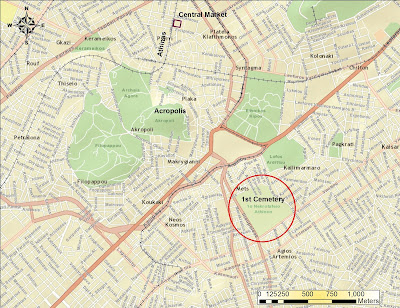
This topic does not cover decay but the opposite: the agricultural wealth of spring. Spring in the Peloponnese is just gorgeous. The mountains still have snow, the streams are still running, and the fields are bursting with new growth. Vrachati is an agricultural town on the coastal plain facing the Gulf of Corinth, about 20 km west of the city of Corinth. Every Friday, a regional farmers market is held in the central street and plaza. Quite a mixture of vendors show up: farmers, artists with the standard nick knacks, gypsies with plastic furniture, and importers of cheap socks and underwear.
You see a variety of shoppers, including locals and city dwellers buying supplies before heading home to the city (this usually means Athens).
Of course, the produce looks really good. Once could easily become a vegetarian in Greece and live happily.
Winter is also scenic. The vineyards in the photographs above are near Halki, about an hour drive south (inland) from Vrachati.

Food everywhere is Greece is great. The ultimate farmers' market is the famous Central Market in Athens, featured in my 2011 article. Want some cheese? Plenty to select.

Nuts and figs? You can find the best here, including the figs from Kimi, a town on eastern Euboea (Greek: Εύβοια, Évia). The Kimi figs are reputed to be the best on earth - why would I disagree?

Even a regular commercial supermarket in Athens (this one in the suburb of Halandri) has great produce - hmmm, maybe better than one of our Krogers or Safeways?

And for readers with a sweet tooth, any sweet shop in Athens will fill you with nuts, honey, chocolate, espresso, and kilocalories. Back in USA, you will wonder how we can eat the offal that pass for cakes and pastries.
I took the Vrahati frames with an Olympus E-330 digital camera with 14-54mm lens. The background map is from ESRI® ArcMap™ software using ESRI maps and data.



